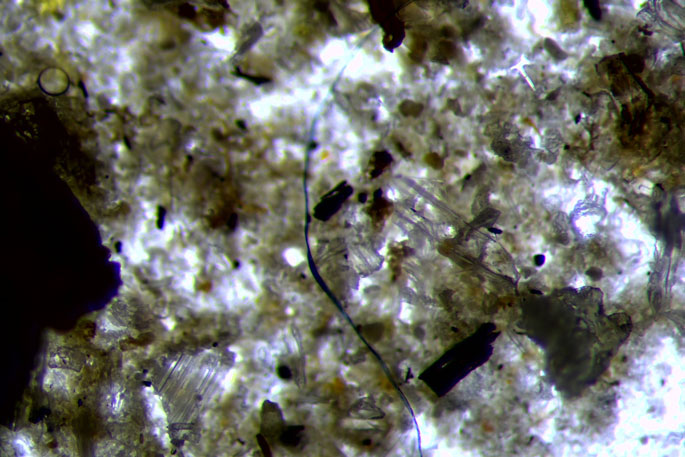Microplastics have been found in extremely high levels across the Bay of Plenty moana with sediment and shellfish found full of tiny plastic particles, University of Waikato researchers say.
The discovery comes as the Government last week announced it would move to ban some plastic products by 2025.
Master of Science student, Anita Lewis, presented findings of her research at the New Zealand Marine Sciences Society Conference held at the University of Waikato's Tauranga campus this week.
Tiny plastic particles were found in every sediment sample she took from across the region, between Tauranga Harbour and the eastern coast to Maketu and Ōpōtiki.
There was not one area sampled where microplastics were not present and particularly high levels were found in shellfish, including Tuatua, Cockles and Wedge Shells.
Environment Minister David Parker announced last week from late 2022 PVC meat trays, polystyrene takeaway packaging and degradable plastic products will not be allowed and by mid-2025 all other PVC and polystyrene food and drink packaging will be outlawed.
The ban also includes single-use plastic items such as drink stirrers, cotton buds, single-use produce bags, cutlery, plates and bowls, straws and fruit labels.
Anita, who received a $23,000 Tauranga Campus Research Masters Scholarship to fund her study, said her research findings were alarming, illustrating the impact plastics were having not only on our marine environment, but potentially human health.
'Kaimoana (seafood) gathering in New Zealand is common practice and this research is showing microplastics and nano-plastics are now bioaccumulating in our food chain.”
She saysd banning single use plastics is an important step, but more research is needed to understand the problem.
Her work is one of only three pieces of research undertaken on microplastics in New Zealand.
 A close-up look of a mircoplastic fibre.
A close-up look of a mircoplastic fibre.
The highest density of microplastic particles (up to 11087.9 per m2) were observed at sites that are close to municipal outfalls and populated areas.
She says many microplastics enter the marine environment via treated wastewater.
'While filtering large pieces of plastic, the membranes in the treatment plants also act like abrasives on small microplastics, making them even smaller and turning them into nano-plastics as they go through the system,” she says.
Along with banning single use plastics she said more work could be done including investigating the use of different filters in household washing machines and investigating different types of membranes for use in wastewater treatment plants.
More than 400 scientists, iwi, and marine environmental stakeholders from universities, Crown Research Institutes and organisations have gathered at the conference this week to discuss how New Zealand can protect and sustainably harness the economic potential of our marine environment.



2 comments
Hmmm
Posted on 08-07-2021 10:27 | By Let's get real
Not a particularly surprising result. Unfortunately this is the result of decadesof using the oceans of the world as a rubbish dumping ground. Travellers will all recall having witnessed gutters, drainage channels, streams and the like around the world being clogged with detritus until the next storm when it's washed out to sea to be churned up and forgotten about. But I fear that once again, this form of reporting will be used to batter NZ into believing that we are solely to blame for what is discovered in our backyard. New Zealand cannot and will not save the planet, but we can produce enough to feed many times our population.
@Let's get real
Posted on 08-07-2021 16:24 | By morepork
We may or may not be responsible for ALL the plastic, but the fact is that we can cut out the part we ARE responsible for. Plastic eating nanobots and bacteria are in the pipeline, but concerns about controlling them are slowing the deployment. People won't be too happy if we clean up the Oceans and then their plastic boats start sinking... Can you imagine what would happen if these "micro cleaners" got loose on land and started chomping through all the plastic? We need to have patience and let the scientists solve it. Meanwhile, it won't hurt us to make less mess. I'm wondering of eating the seafood is dangerous. Presumably, plastic will pass through the Human digestive system without harm...
Leave a Comment
You must be logged in to make a comment.